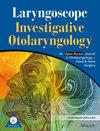Systemic Hormonal Contraceptive Use and Rhinitis Among Adult Women: An All of Us Database Analysis
Abstract
Objectives
The role of sex hormones in the pathogenesis of allergic and inflammatory conditions such as rhinitis has been receiving increased attention, with evidence supporting an inflammation-modulating role of estrogen and progesterone in the nasal mucosa. However, the specific influence of hormonal contraceptives in rhinitis has been sparsely studied. As such, we sought to investigate the association of systemic hormonal contraceptives with both allergic (AR) and nonallergic rhinitis (NAR) using a national data set of adults in the United States.
Methods
This study was conducted using data from 46,205 female participants aged 20–40 in the All of Us Research Program. Rhinitis diagnoses, systemic hormonal contraceptive use, and covariate data were extracted for all participants. These variables were included in multivariable logistic regression models assessing the association of any systemic hormonal contraceptive use with rhinitis, both AR and NAR. Separate models were conducted to examine the association of progestin-only contraceptives (POCs) and estrogen-containing contraceptives (ECCs) on the odds of rhinitis. Adjusted odds ratios (OR) and 95% confidence intervals (CI) were calculated.
Results
Systemic hormonal contraceptives were associated with AR (OR: 1.32; 95% CI: 1.20–1.44) but not NAR (OR: 1.20; 95% CI: 0.90–1.56) after controlling for covariates. When analyzing POCs and ECCs separately, both were associated with AR compared to those not taking any systemic hormonal contraceptives (OR: 1.29; 95% CI: 1.12–1.48 for POC, OR: 1.35; 95% CI: 1.21–1.51 for ECC) but were not significantly associated with NAR (OR: 1.04; 95% CI: 0.66–1.57 for POC, OR: 1.33; 95% CI: 0.95–1.81 for ECC).
Conclusion
Systemic hormonal contraceptive use was independently associated with AR, with no significant difference between POCs and ECCs, while not being associated with NAR. Our findings may support a hormonal role in the pathogenesis of AR, but further research is needed to establish causation and understand the underlying mechanisms linking systemic hormonal contraceptive use to AR.
Level of Evidence
3.


 求助内容:
求助内容: 应助结果提醒方式:
应助结果提醒方式:


